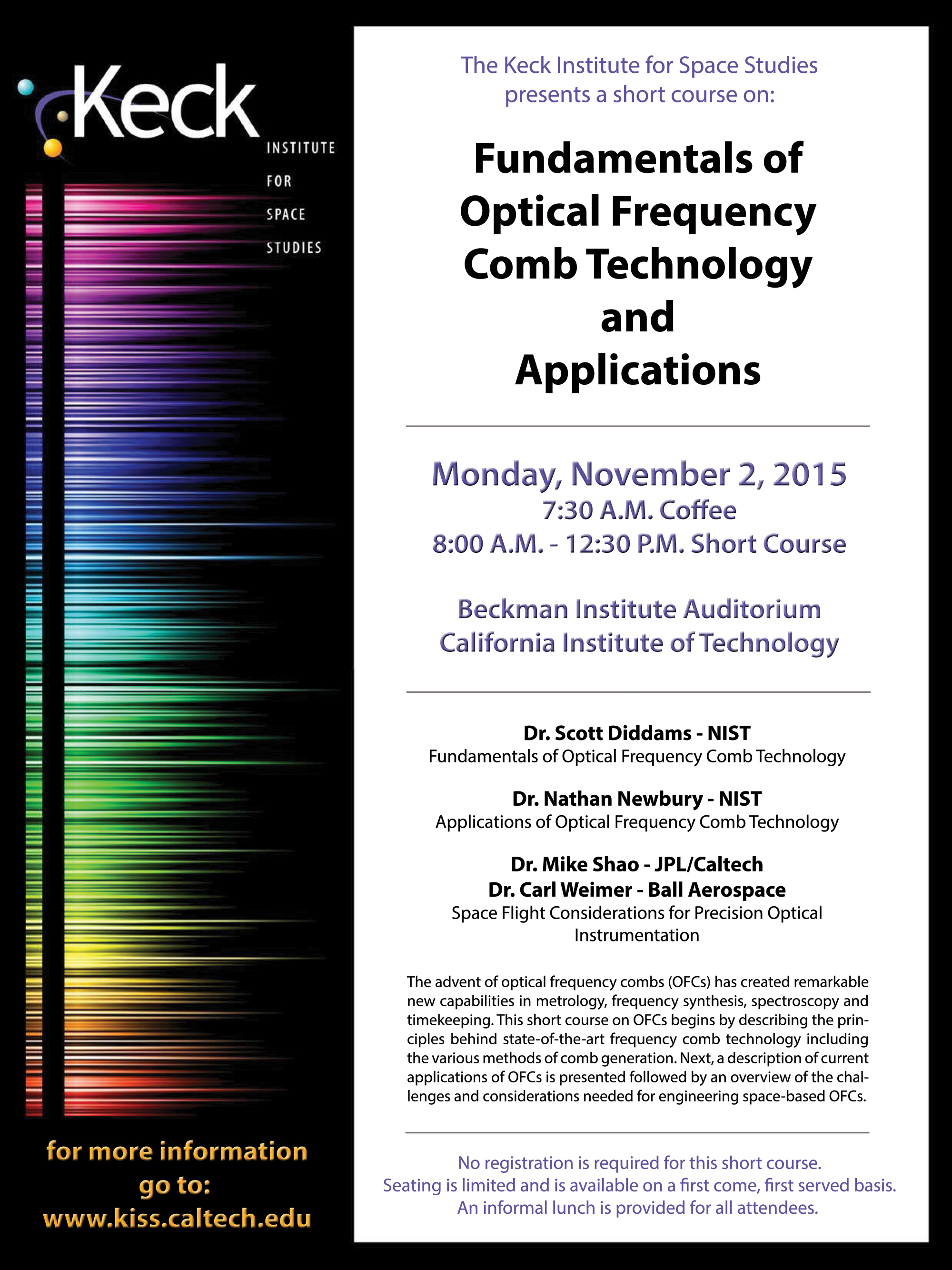Short Course: Fundamentals of Optical Frequency Comb Technology and Applications
Monday, November 2, 2015
7:30 A.M. Coffee
8:00 A.M. - 12:30 P.M. Short Course
Beckman Institute Auditorium - California Institute of Technology

Abstract:
The advent of optical frequency combs (OFCs) has created remarkable new capabilities in metrology, frequency synthesis, spectroscopy and timekeeping. An OFC is an optical spectrum consisting of stability controlled, uniformly spaced lines. OFCs are central to a new generation of clocks that are 100 times more accurate than today's best time-keeping systems, enabling new capabilities for communication, navigation, and tests of fundamental science. Increasingly, OFCs are also impacting other application areas as well. Examples include high-resolution broad-band spectroscopy for trace gas detection, precision wavelength calibration in exoplanet detection, coherent control for study of ultrafast dynamics, and measurement improvements in space interferometry, reflectometry, and LIDAR. In addition, the miniaturization of OFC technology provided by microcombs offers a host of opportunities for instruments on landers, distributed spacecraft, and CubeSat-scale spacecraft in the next decade.
This short course on Optical Frequency Combs begins by describing the principles behind state-of-the-art frequency comb technology including the various methods of comb generation. Next, a description of current applications of OFCs is presented followed by an overview of the challenges and considerations needed for engineering space-based OFCs.
Short Course Presentations |
|
|
S. Diddams |
Fundamentals of frequency combs: What they are and how they work |
|
N. Newbury |
Applications of Frequency Combs |
|
M. Shao |
Space Flight Considerations for Precision Optical Instruments |
|
C. Weimer |
From the Lab to Space: Comments on Instrument Qualification |